MORF9 Functions in Plastid RNA Editing with Tissue Specificity
- PMID: 31546885
- PMCID: PMC6769653
- DOI: 10.3390/ijms20184635
MORF9 Functions in Plastid RNA Editing with Tissue Specificity
Abstract
RNA editing in plant mitochondria and plastids converts specific nucleotides from cytidine (C) to uridine (U). These editing events differ among plant species and are relevant to developmental stages or are impacted by environmental conditions. Proteins of the MORF family are essential components of plant editosomes. One of the members, MORF9, is considered the core protein of the editing complex and is involved in the editing of most sites in chloroplasts. In this study, the phenotypes of a T-DNA insertion line with loss of MORF9 and of the genetic complementation line of Arabidopsis were analyzed, and the editing efficiencies of plastid RNAs in roots, rosette leaves, and flowers from the morf9 mutant and the wild-type (WT) control were compared by bulk-cDNA sequencing. The results showed that most of the known MORF9-associated plastid RNA editing events in rosette leaves and flowers were similarly reduced by morf9 mutation, with the exception that the editing rate of the sites ndhB-872 and psbF-65 declined in the leaves and that of ndhB-586 decreased only in the flowers. In the roots, however, the loss of MORF9 had a much lower effect on overall plastid RNA editing, with nine sites showing no significant editing efficiency change, including accD-794, ndhD-383, psbZ-50, ndhF-290, ndhD-878, matK-706, clpP1-559, rpoA-200, and ndhD-674, which were reduced in the other tissues. Furthermore, we found that during plant aging, MORF9 mRNA level, but not the protein level, was downregulated in senescent leaves. On the basis of these observations, we suggest that MORF9-mediated RNA editing is tissue-dependent and the resultant organelle proteomes are pertinent to the specific tissue functions.
Keywords: Arabidopsis thaliana; MORF9; RNA editing; organelles; tissue-specific.
Conflict of interest statement
The authors declare no conflict of interest.
Figures

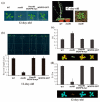
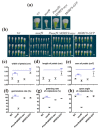
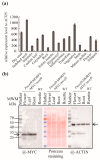
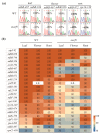
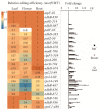

Similar articles
-
MORF9-dependent specific plastid RNA editing inhibits root growth under sugar starvation in Arabidopsis.Plant Cell Environ. 2024 Jun;47(6):1921-1940. doi: 10.1111/pce.14856. Epub 2024 Feb 15. Plant Cell Environ. 2024. PMID: 38357785
-
MORF9 increases the RNA-binding activity of PLS-type pentatricopeptide repeat protein in plastid RNA editing.Nat Plants. 2017 Apr 10;3:17037. doi: 10.1038/nplants.2017.37. Nat Plants. 2017. PMID: 28394309
-
MORF2 tightly associates with MORF9 to regulate chloroplast RNA editing in Arabidopsis.Plant Sci. 2019 Jan;278:64-69. doi: 10.1016/j.plantsci.2018.10.020. Epub 2018 Oct 28. Plant Sci. 2019. PMID: 30471730
-
RNA editing machinery in plant organelles.Sci China Life Sci. 2018 Feb;61(2):162-169. doi: 10.1007/s11427-017-9170-3. Epub 2017 Oct 23. Sci China Life Sci. 2018. PMID: 29075943 Review.
-
Mechanistic insight into pentatricopeptide repeat proteins as sequence-specific RNA-binding proteins for organellar RNAs in plants.Plant Cell Physiol. 2012 Jul;53(7):1171-9. doi: 10.1093/pcp/pcs069. Epub 2012 May 9. Plant Cell Physiol. 2012. PMID: 22576772 Review.
Cited by
-
Genome-wide identification and expression analysis of peach multiple organellar RNA editing factors reveals the roles of RNA editing in plant immunity.BMC Plant Biol. 2022 Dec 13;22(1):583. doi: 10.1186/s12870-022-03982-2. BMC Plant Biol. 2022. PMID: 36513981 Free PMC article.
-
Comparison of plastid proteomes points towards a higher plastidial redox turnover in vascular tissues than in mesophyll cells.J Exp Bot. 2023 Aug 3;74(14):4110-4124. doi: 10.1093/jxb/erad133. J Exp Bot. 2023. PMID: 37026385 Free PMC article.
-
Decoding RNA Editing Sites Through Transcriptome Analysis in Rice Under Alkaline Stress.Front Plant Sci. 2022 Jun 23;13:892729. doi: 10.3389/fpls.2022.892729. eCollection 2022. Front Plant Sci. 2022. PMID: 35812946 Free PMC article.
-
Multiple Layers of Regulation on Leaf Senescence: New Advances and Perspectives.Front Plant Sci. 2021 Dec 6;12:788996. doi: 10.3389/fpls.2021.788996. eCollection 2021. Front Plant Sci. 2021. PMID: 34938309 Free PMC article. Review.
-
Comparative Study of the Mitochondrial Proteome From Mesophyll, Vascular, and Guard Cells in Response to Carbon Starvation.Physiol Plant. 2025 Sep-Oct;177(5):e70465. doi: 10.1111/ppl.70465. Physiol Plant. 2025. PMID: 40873255 Free PMC article.
References
-
- Bentolila S., Heller W.P., Sun T., Babina A.M., Friso G., van Wijk K.J., Hanson M.R. Rip1, a member of an arabidopsis protein family, interacts with the protein rare1 and broadly affects rna editing. Proc. Natl. Acad. Sci. USA. 2012;109:E1453–E1461. doi: 10.1073/pnas.1121465109. - DOI - PMC - PubMed
MeSH terms
Substances
Grants and funding
LinkOut - more resources
Full Text Sources
Molecular Biology Databases
Miscellaneous

